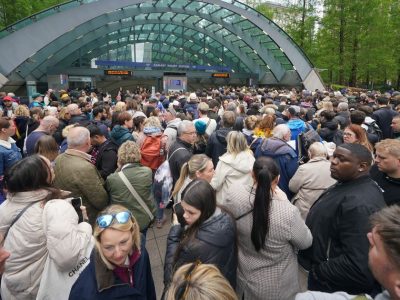Could anyone loathe railways any more than the current prime minister? Rishi Sunak’s sheer contempt for the future of train travel (as well as the north of England) was most amply demonstrated when he scrapped HS2 north of Birmingham. Yet even as chancellor, Mr Sunak did what he could to encourage travellers to fly rather than take the train: on the eve of the Cop26 climate summit in Glasgow, he announced the halving of air passenger duty on domestic routes.
Airline passengers between Edinburgh and London comprise the most numerous beneficiaries of the tax cut from £13 to £6.50. So that makes it a good route on which to compare train versus plane for cost.
The Rail Delivery Group has done the work for me. In a new report, the organisation representing train operators claims: “Travelling by rail can be up to 80 per cent cheaper on similar routes than flying, when accounting for the additional cost of baggage and airport transfers.”
On Edinburgh-London the saving is a handy 72 per cent. A return train, out on 27 May and returning four days later, is priced at £111, while the cost of a flight is £114 – with an extra £80 for baggage and (wait for it) £200 for a minicab to and from the airport at either end.
An important element of research is peer review. The fares were researched on 4 April, and I am checking them 16 days later. But that is still five weeks before departure, so a fresh comparison is valid.
I am delighted to say the cheapest rail ticket has fallen to £90 return: northbound on Lumo from London King’s Cross, southbound on Avanti West Coast to London Euston.
But the cheapest flight has come down even further: the lowest return airfare, thanks in no small part to the prime minister’s benevolence towards airlines, is just £39 on Ryanair from London Stansted. But that £200 in minicabs cited by the Rail Delivery Group appears to be for a combination of Gatwick and Edinburgh, so let’s look at the Sussex airport. The fare on easyJet is £95 return, so already the train is a fiver ahead. Add in £61 (not the mysterious £80 quoted by the study) for a very chunky 23kg checked-in case. That’s £156.
Now for the surface transport. Nobody in their right mind would ever get a minicab between central London and Gatwick: the A23 is the worst artery the capital has (and yes, I have checked).
With trains every few minutes during the day, and at least hourly at night, any sensible traveller will pay the £26 return fare on Thameslink, serving a series of city-centre stations including Blackfriars, Farringdon and St Pancras. Ditto between Edinburgh airport and the centre of the Scottish capital: the Airlink 100 bus takes about 30 minutes for a return fare of £8, a much better deal than the tram with its punitive airport surcharge. All told, the airline passenger with a heavy case pays £190. So the train triumphs, saving £100 (or 53 per cent, if you prefer percentages).
Yet I am troubled by all these assumptions. Price-sensitive passengers would surely head for Stansted and that Ryanair flight and take only a modest cabin bag. Adding the Stansted Express train and Edinburgh Airlink bus takes the total to £83 return, cheaper than rail.
Conversely, though, one huge advantage of the train is the fact that hardly anyone needs pay full fare on the railway. Children travel half-price; any adult with a child qualifies for a railcard, as do the under-31s and over-60s. Even during that annoying age range in the middle, you can team up with another traveller to buy a Two Together railcard that will save money even on one round trip.
“By choosing to take the train, you are helping the planet while also saving yourself from hidden costs for baggage and airport transfers,” says the Rail Delivery Group. I agree wholeheartedly. But it helps not to exaggerate the benefits – and to appreciate the benefits of competition.
Simon Calder, also known as The Man Who Pays His Way, has been writing about travel for The Independent since 1994. In his weekly opinion column, he explores a key travel issue – and what it means for you











